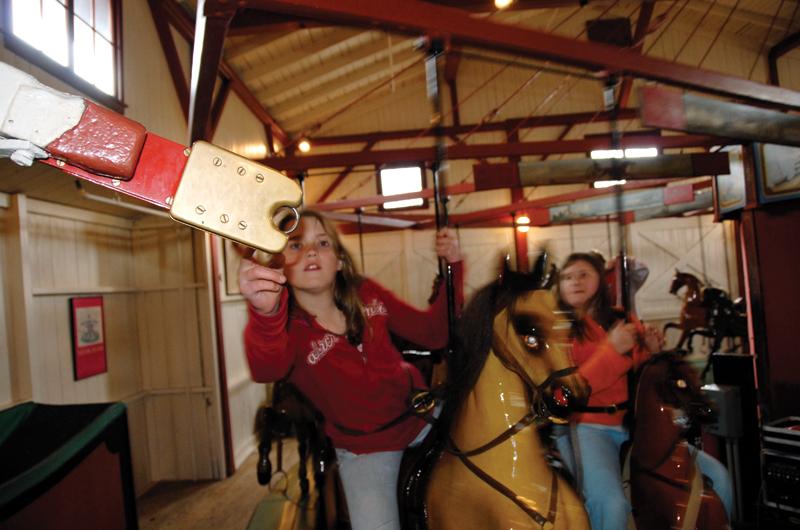
In the spirit of our anniversary issue, I was looking back over the years and realized I’ve written close to forty How It Works columns since 2004. Which in turn made me ask: What have I been thinking? One certainly doesn’t become rich or famous trying to explain how the pump-out boat works in Vineyard Haven harbor.
So why do I do it?
Well, I have to admit, it’s fun. I learn about a lot of interesting stuff. But mostly it’s a wonderful way to meet people I wouldn’t otherwise meet and to genuinely get a feel for the pulse of the Island.
It’s also led to some memorable experiences over the years: like being in the control tower at the Martha’s Vineyard Airport with Tower Manager Michele Meyers as she made sense of the Rubik’s Cube called Vineyard air traffic; or sitting in the wheelhouse of the Martha’s Vineyard as Captain Henry Parker Hirschel nestled her into the slip in Woods Hole against a formidable cross wind; or spending a morning in a teepee with David and Saskia Vanderhoop of Aquinnah, talking about Indian spirituality.
And then there was the iceboating.
I had talked at some length to Chilmark’s Scott McDowell and Aquinnah’s Hugh Taylor, a couple of the more serious iceboaters on the Island, and they had given me a rundown on the fundamentals of iceboating and some of the tradition and heritage surrounding this exciting sport. But nothing really prepares you for iceboating like actually getting out there and doing it. So on the invitation of Scott, I went out to Squibnocket on a cold and blustery January afternoon to give it a try. As I walked toward the pond the first person I saw was Scott. He was wiping a trickle of blood from his face and heading back to his car. He greeted me: “Hey Geoff, how you doing? If you want to go out, you can take that boat over there.” I could hardly wait.
But in spite of this inauspicious beginning, I was determined to give it a shot and before long I was cruising out toward the center of the pond on a starboard reach. I know something about sailing but sailing on “hard water,” as they call it, is a whole different thing. First of all, you’re lying on your back trying to hold your head up to see where you’re going with a heavy helmet strapped to your head. Another thing is the speed. I probably got up to around thirty-five or forty miles per hour, but on a brisk day you could easily double that. And then there are those cracks in the ice. If you get a runner stuck in a crack you can pretty much call it a day. Just ask Scott. But the bottom line is: what a rush.
Another highlight was putting together a story on harpooning swordfish. I had been playing phone tag with Captain Jonathan Mayhew, of Chilmark, for over a week. I was beginning to think that he really didn’t have much time or inclination to speak with me when I finally made phone contact. We talked for a while and to my surprise, he offered to meet me the next morning on the dock in Menemsha. He wanted to take me fluke fishing on the Quitsa Strider II. He said when we weren’t hauling nets there’d be time to talk.
As promised, we spent the day out fishing for fluke. I got a small taste of what it’s like to work on a seventy-two-foot dragger and more importantly, I got to spend several hours talking to an Island legend about the halcyon days of “sticking” swordfish on Georges Bank. For the purpose of the article, it probably would have been better if I hadn’t tape recorded our conversations in the wheelhouse; when I got home all I could hear was engine noise. But fortunately I took notes – and I’ll always have the memory.
Which brings me to perhaps my favorite moment of all. I was researching a story on the Flying Horses Carousel in Oak Bluffs and “Panhead” Mike Fuss, the mechanic in charge of maintenance, agreed to meet me at the carousel. It was off-season and when I got there the town was mostly deserted except for a family – a mother, father, and nine-year-old girl – standing in front of the Flying Horses building.
When Panhead and I started to go in, they wanted to know if the carousel was open. They were from California and were staying on the Cape but had heard about the country’s oldest operating carousel and had come over just to see it. Panhead explained that it was closed for the season, but when he saw the disappointment on the little girl’s face he said, “Oh what the heck, come on in.”
Once inside he said to the girl, “You want to go for a ride?” She lit up. Panhead cranked up the carousel and the little girl climbed onto one of the horses and you could have seen her smile from space. Then Mike looked over at me and said, “Betcha want to get up there too – come on.”
The next thing I knew, there we were: Panhead, a bear of a man with a flowing white beard, and me – well, let me put it this way, I’m a grandfather – gliding along on waves of pipe-organ music, grabbing for brass rings like they were diamonds.
That’s why I write the How It Works column.




